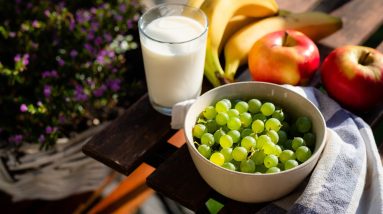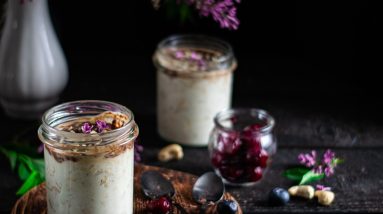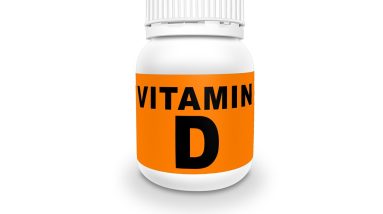
Struggling to Find Motivation for Weight Loss? These 8 Tips Could Be the Game-Changer You Need
If you’re just starting your weight loss journey, it can be tough to stay motivated — and that’s normal!
Losing weight and bettering your health requires serious commitment and lifestyle changes, which isn’t always easy.
To help, we’ve rounded up 8 of the best ways to stay motivated and keep your weight loss on track.
1. Identify Your “Why”  Photo Credit: Shutterstock
Photo Credit: Shutterstock
So, what is the ultimate reason you want to lose weight?
Your “why” is the purpose behind the action that will drive you forward when times get tough. Think of it as your “purpose statement.”
It should be more than just wanting a better physique; it needs to have emotional meaning. It connects to your life values and is so much deeper than just weight loss! (Weight loss is the byproduct of your new habits.)
When it comes to weight loss, one size doesn’t fit all. Every person will have a deeper reason as to why weight loss will change their life.
For example:
- Are you looking to improve your overall health?
- Do you want more energy or confidence?
- Are you trying to stay healthy for your kids or grandchildren?
- Do you have medical issues that would benefit from a healthier weight?
- Are you sick of being tired all the time?
No matter the incentive, figuring out why you’re striving for a transformation can assist in sustaining your dedication and keeping you on track to attaining your ambition. These deeper desires will eventually result in weight loss because you’ll change your habits to achieve them.
Once you’ve identified your why (and it can’t be “weight loss”—you need something meaningful!), it’s time to determine how you will get started by setting your goals.
2. Break Down Larger Goals Into Smaller Steps  Photo Credit: Shutterstock
Photo Credit: Shutterstock
Achieving success necessitates the need for goals. It helps to focus your energy and create a plan for reaching the desired outcome. Goals should be realistic, measurable, and achievable within a reasonable amount of time.
To ensure that you are setting yourself up for success, it’s best to break down large goals into smaller tasks or steps. Smaller objectives can be established to make the larger goal more manageable and keep you inspired as you progress.
Example: If your aim is to shed 10 pounds by the start of summer, break it down into bite-sized portions, such as losing 1-2 lbs per week for the upcoming months.
Set Weekly or Monthy Mini-Goals, Too
All of your small successes will add up over time and help keep you on track toward achieving your overall goal.
Example: Exercise five times a week for 20 minutes or cut out sugary snacks from your diet completely.
3. Find Your Support System  Photo Credit: Shutterstock
Photo Credit: Shutterstock
When aiming to reach objectives, consider who or what support systems you can utilize to ensure success.
Examples:
- Consider asking for support from friends and family who can offer encouragement when needed.
- Join a gym with knowledgeable trainers who can provide guidance during workouts.
- Connect with an online community where people share their experiences related to similar objectives so that you don’t feel isolated on your journey toward success.
4. Create a “Stop/Start Doing” List  Photo Credit: Shutterstock
Photo Credit: Shutterstock
Once your goals are set and organized, it’s time to create a plan of action. This is often where people stop. They set their goals but never really decide how they will actually make them happen.
Creating a solid action plan is essential to achieving any goal. Think of this as the roadmap that will help you get from where you are now to where you want to be.
An action plan will lay out the daily, weekly, and even monthly tasks you need to do. It also involves a timeline for completing each step.
The first step is to create a stop/start doing list. This helps identify the habits you know you need to stop doing and creates awareness of the habits you’d like to adopt.
Example: Let’s say your goal is to eat healthier. Here is your “stop/start doing” list:
- During week one, eliminate added sugars from your diet. (I.e., something to stop doing.)
- During week two, make sure you’re getting five fruits and vegetables per day. (I.e., something to start doing.)
- During the following weeks, add more things to stop and start doing. You’ll create better habits as you do!
5. Create Timelines That Help Fit in New Routines 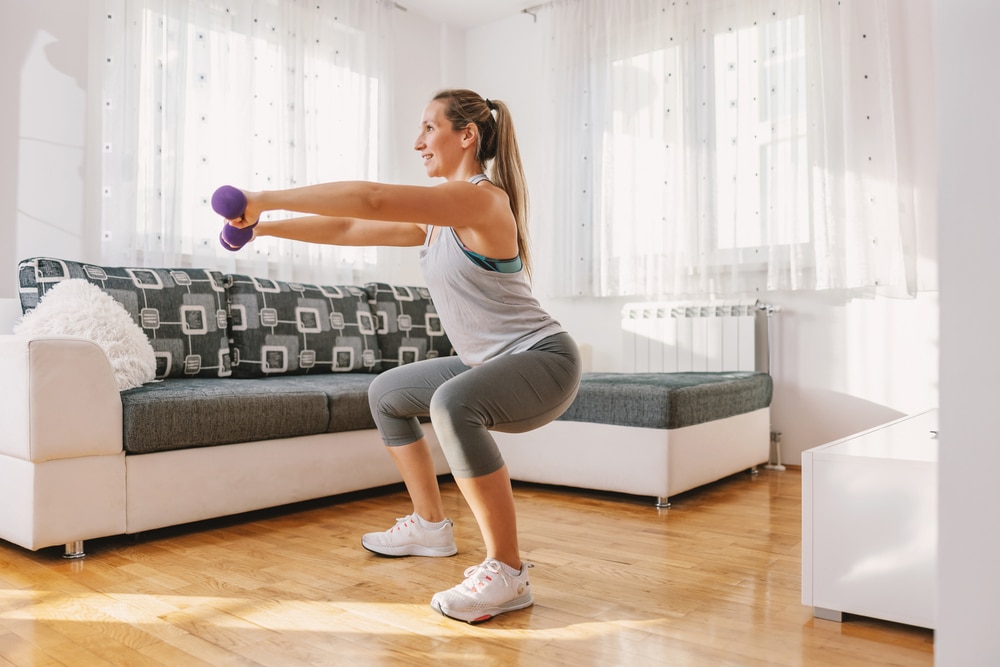 Photo Credit: Shutterstock
Photo Credit: Shutterstock
Consider how much time and effort each new habit will take to fit into your lifestyle without becoming overwhelming or too difficult to manage.
Example: If your nearest gym is 30 minutes away, maybe exercising at home is a better choice. If necessary, adjust the timeline accordingly to work along with your schedule and other commitments.
6. Build In Rewards  Photo Credit: Shutterstock
Photo Credit: Shutterstock
Make sure you add in rewards along the way! This could be in the form of self-care after reaching certain milestones or celebrating small victories with the purchase of something you’ve wanted for a while.
You decide what works for you, but make sure you celebrate the milestones because you deserve it!
7. Monitor Your Progress  Photo Credit: Shutterstock
Photo Credit: Shutterstock
Regularly monitor progress on each task with weekly reviews. This holds yourself accountable and keeps you motivated!
Remember that you might not reach your goals in the first weeks or months—but don’t get discouraged. Just ensure your action steps are realistic and achievable so they don’t become overwhelming or discouraging.
8. Journal Your “Why”  Photo Credit: Shutterstock
Photo Credit: Shutterstock
Journaling your “why” is a powerful tool to help you stay focused and motivated on the path toward creating a healthier, happier life.
Writing down how you feel before beginning any kind of lifestyle change helps you stay connected with yourself during moments of doubt or discouragement. It allows you time to reflect on your progress thus far and what lies ahead if you remain committed over time.
Journaling before, during, and after your progress allows you access to your innermost thoughts, which gives clarity during the journey.
Expert Tip: As progress is made toward each goal, reviewing your notes and thoughts is insightful! It provides motivation to keep going and allows you to look back over your journey and appreciate how far you’ve come since setting out on your path toward self-improvement.
Weight Loss Motivation Checklist 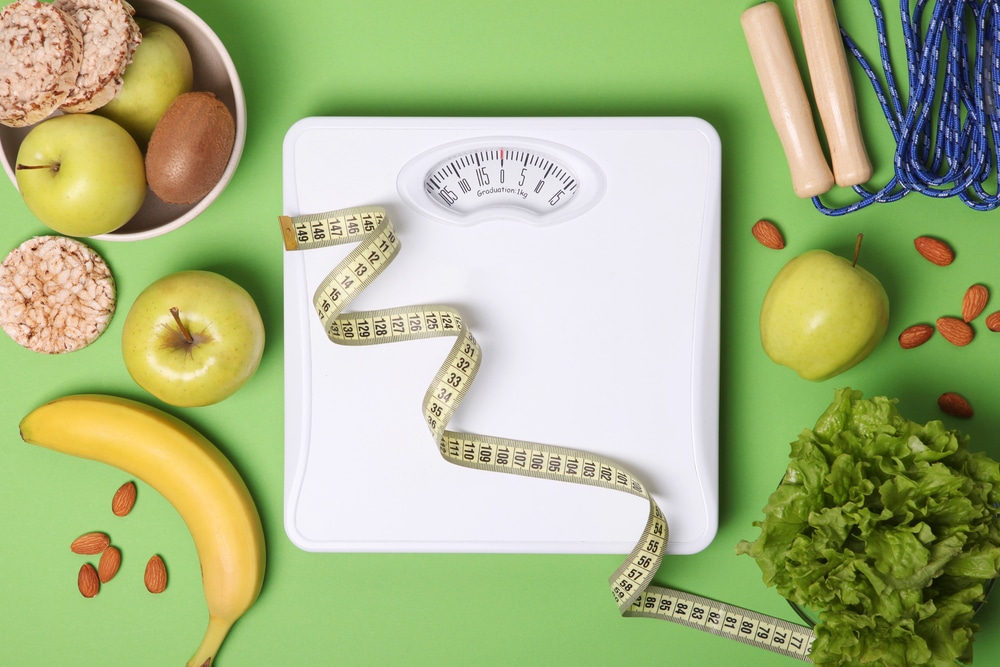 Photo Credit: Shutterstock
Photo Credit: Shutterstock
Staying motivated can be a challenge when progress seems slow or difficult. At the end of the day, weight loss is hard! You need to dig deep inside, find your grit, be patient, and stay the course.
Here’s Your Checklist for Staying Motivated While Losing Weight
A quick recap for reaching your goals:
1. Celebrate small wins: Celebrating small wins along the way can help keep you focused and motivated on your larger goal. Acknowledge each step forward as an accomplishment and reward yourself with something special, like a massage or a night out with friends.
2. Visualize your goals: Take time to visualize what achieving your goals would look like in detail. Connect to how you feel as you get closer. This will help remind you why you are working on these new habits and motivate you to keep going even when things get tough.
3. Find inspiration: Surround yourself with positive people who have achieved their goals or are currently working towards them. Reading stories of success from others can also provide great inspiration and motivation for your own journey ahead.
4. Break down goals into manageable steps: Breaking down large goals into smaller steps makes them more manageable and less intimidating, which helps maintain motivation levels over time. Make sure the steps are realistic and don’t become overwhelming. Setting unrealistic expectations can lead to discouragement rather than motivation if not met quickly enough.
How To Start Working Out Again (& Stick With It!)  Photo Credit: Shutterstock
Photo Credit: Shutterstock
Whatever the reason – lack of time, injuries, pregnancy, or just don’t enjoy exercise – most of us experience a lull in exercise at one point or another. Regardless, getting back to the gym after time away can be tough!
When you are ready to get back at it and stick to it for good, here are 9 tips to show you how to start working out again and stay with it.
How To Start Working Out Again (& Stick With It!)
Power Walking For Beginners  Photo Credit: Shutterstock
Photo Credit: Shutterstock
With countless studies proving the health benefits of power walking, learning how to do it will keep you moving well into the future.
Power walking is one of the most maintainable workouts a person can add to their life, so if you haven’t tried it yet, how about starting now?
Power Walking For Beginners
Yoga For Beginners | A Complete Guide To Get Started 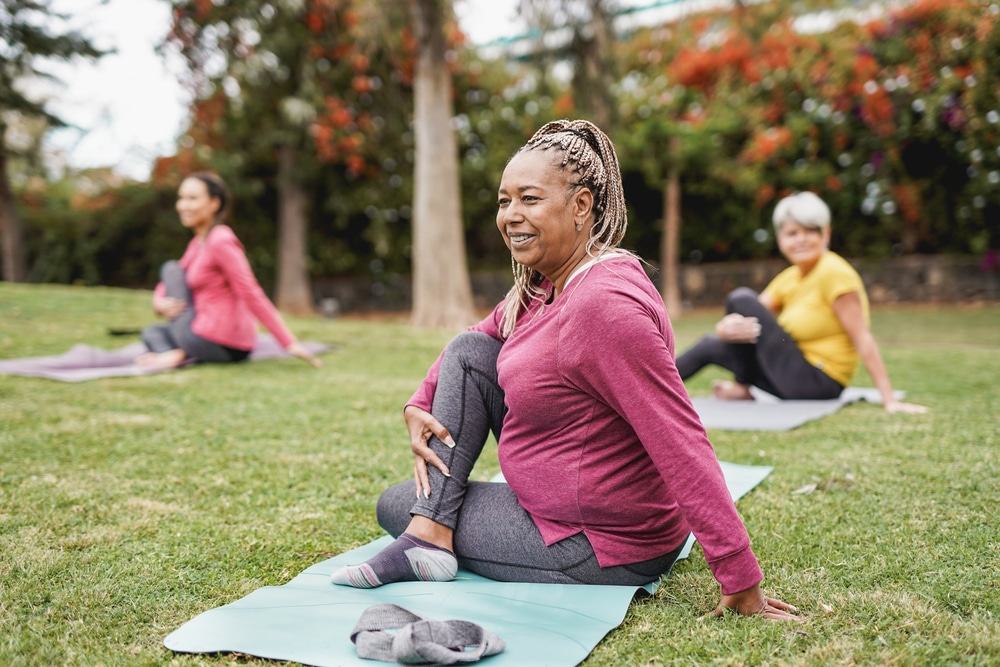 Photo Credit: Shutterstock
Photo Credit: Shutterstock
If you’ve wanted to begin yoga but don’t know where to start, have no fear! This yoga for beginners guide has everything you need to succeed.
Learn the different types and benefits of yoga, as well as guidance on how to get started and choose the practice that works best for you!
Yoga For Beginners | A Complete Guide To Get Started

10 Reasons to Get Certified in Prenatal and Postnatal Fitness: Empowering Moms
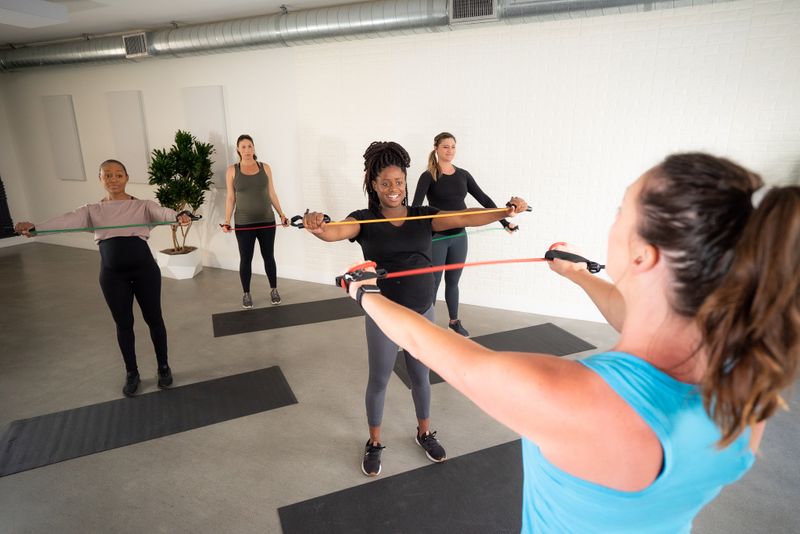
Bringing new life into the world is a miraculous and life-altering experience. Still, it’s no secret that pregnancy and postpartum can bring a whirlwind of changes to a woman’s body. As a fitness professional or health enthusiast, you have the power to support and empower mothers on their journey to a healthy pregnancy, a smoother birth experience, and a robust postpartum recovery. How can you equip yourself with the knowledge and skills to provide the best care and guidance? The answer lies in becoming prenatal and postnatal certified!
In this blog, we will delve into ten compelling reasons why getting prenatal and postnatal certified is not just a valuable addition to your credentials, but a way to make a significant difference in the lives of expectant and new mothers. Whether you’re a fitness trainer, yoga instructor, healthcare provider, or someone passionate about women’s health, the FIT4MOM prenatal and postnatal fitness certification opens the door to a world of possibilities and positive impact!
Let’s dive in, Mama.
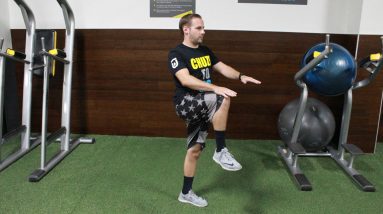
7 Effective Stretches to Relieve Knee Pain: Expert-Backed Techniques for Fitness Enthusiasts
Knee Pain Stretches
Knee pain can be a debilitating issue that affects people of all ages and lifestyles. Whether it’s caused by an injury, overuse, or underlying medical conditions, finding relief is essential for maintaining an active and healthy life. While consulting a healthcare professional is crucial for proper diagnosis and treatment, incorporating targeted stretches into your routine can significantly alleviate knee pain and improve mobility. In this blog, we’ll explore a range of knee pain stretches that can help you regain comfort and flexibility.
How Stretching Can Help With Knee Pain
Stretching can be an effective and beneficial approach to managing knee pain. While it might not directly address all the underlying causes of knee pain, it can significantly alleviate discomfort, improve flexibility, and promote overall joint health. Here’s how stretching can help with knee pain:
- Improved Flexibility: Tight muscles around the knee joint can contribute to pain and discomfort. Certain knee exercises and stretches can help lengthen and relax these muscles to reduce tension and enhance flexibility. When your muscles are more flexible, they’re less likely to pull on your knee joint and cause discomfort.
- Better Range of Motion: Knee pain can sometimes lead to reduced range of motion in the joint. Gentle stretching helps to gradually increase the joint’s mobility by releasing tightness in the muscles and connective tissues around it.
- Better Blood Circulation: Stretching also increases blood flow to the muscles and tissues around the knee.
- Reduced Muscle Imbalance: Muscular imbalances around the knee can contribute to improper joint alignment and pain. Stretching both the muscles that are overly tight and those that are weak can help restore balance, which can lead to better knee alignment and reduced discomfort.
- Injury Prevention: Regular stretching can help prevent injuries that may exacerbate knee pain. When muscles and tendons are more flexible and less tense, they are less likely to tear or strain during physical activities, reducing the risk of further knee complications.
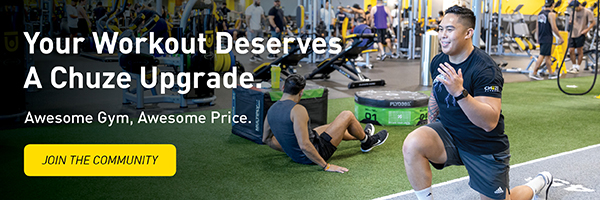 6 Knee Pain Stretches
6 Knee Pain Stretches
The following stretches can provide relief from chronic knee pain and promote better joint health:
Quadriceps Stretch
The quadriceps muscles play a vital role in knee stability and movement. When they’re tight or imbalanced, they can contribute to knee pain. The quadriceps stretch is an excellent way to alleviate tension in these muscles.
How to do it:
- Stand near a wall or hold onto a stable surface for balance.
- Grab your ankle and gently pull it towards your glutes. Make sure to keep your knees close together.
- Hold the stretch for 20-30 seconds, feeling a gentle pull in the front of your thigh.
- Release and switch to the opposite leg.
- Repeat the stretch 2-3 times on each leg.
Hamstring Stretch
Tight hamstrings can also contribute to knee discomfort. Stretching these muscles can help relieve pressure on the knees and improve overall leg flexibility.
How to do it:
- Sit on the floor with one leg extended straight and the other leg bent so the sole of your foot rests against the inner thigh of your extended leg.
- Reach forward toward your toes, keeping your back straight.
- Hold the stretch for 20-30 seconds while feeling the gentle pull along the back of your thigh.
- Switch to the other leg and repeat the stretch.
- Perform the stretch 2-3 times on each leg.
Calf Stretch
Tight calf muscles can affect how the knee joint functions. Stretching the calf muscles can help reduce tension and promote better alignment in the knee.
How to do it:
- Stand facing a wall and place your hands on the wall at shoulder height.
- Step one foot back and keep it straight while bending the front knee.
- Lean into the wall while keeping your back heel on the ground.
- You should feel a gentle stretch in your calf. Hold for 20-30 seconds.
- Switch to the other leg and repeat the stretch.
- Perform the stretch 2-3 times on each leg.
IT Band Stretch
The iliotibial (IT) band is a thick band of tissue that runs along the outside of the thigh. When tight, it can pull on the knee joint and cause discomfort. Stretching the IT band can help relieve this tension.
How to do it:
- Stand upright with your feet close together.
- Cross your right leg over your left and reach your right arm over your head.
- Gently lean to the left side until you feel a stretch along the right side of your body.
- Hold the stretch for 20-30 seconds.
- Switch to the other side by crossing your left leg over your right and reaching your left arm over your head.
- Perform the stretch 2-3 times on each side.
Quad and Hip Flexor Stretch
Tight hip flexors can contribute to knee pain by altering the mechanics of the knee joint. This stretching exercise targets both the quadriceps and hip flexors.
How to do it:
- Kneel on the floor with one knee on a cushion or soft surface.
- Step the other leg forward, keeping the knee directly above the ankle.
- Gently push your hips forward while keeping your back straight.
- You should feel a stretch in the front of your hip and thigh. Hold for 20-30 seconds.
- Switch to the opposite leg and repeat the stretch.
- Perform the stretch 2-3 times on each leg.
Child’s Pose Stretch
The Child’s Pose is a relaxing stretch that can help alleviate knee pain by gently releasing tension in the lower back, hips, and knees.
How to do it:
- Start on your hands and knees in a tabletop position.
- Sit back onto your heels, keeping your arms extended in front of you.
- Lower your forehead to the floor and relax.
- Feel the stretch in your lower back, hips, and thighs.
- Hold the stretch for 30-60 seconds.
A Healthier You with Chuze Fitness
At Chuze, we understand the importance of proper stretching for overall health and well-being, whether you’re trying to relieve joint pain or prevent injury. Chuze Fitness is more than just a gym – it’s a supportive community. With state-of-the-art facilities, experienced trainers, and a wide range of fitness classes, Chuze provides an environment where you can work on your overall health, including addressing knee pain through targeted stretches. Remember, your pursuit of wellness is enhanced when you have a like-minded community backing you. So, find a location near you today to get started!
 Reviewed By:
Reviewed By:
Ani is the Vice President of Fitness at Chuze Fitness and oversees the group fitness and team training departments. She’s had a 25+ year career in club management, personal training, group exercise and instructor training. Ani lives with her husband and son in San Diego, CA and loves hot yoga, snowboarding and all things wellness.
The post Knee Pain Stretches appeared first on Chuze Fitness.

Introducing Brendon Burchard: A Renowned Fitness Model and Health Enthusiast
Il est l’un des conférenciers motivateurs les plus regardés, cités et suivis de l’histoire.
Auteur de trois best-sellers du New York Times, il a partagé la scène avec le Dalaï-Lama, Sir Richard Branson, Tim Ferriss, Tony Robbins et avec beaucoup d’autres influenceurs éminents dans ce domaine.
Les magazines SUCCESS et O, The Oprah Magazine l’ont désigné comme étant l’une des personnes les plus influentes dans le développement personnel ; Forbes l’a nommé premier coach en haute performance du monde, et Larry King l’a élu meilleur entraîneur en motivation du monde.
Il a également fondé et est le PDG de GrowthDay, la plate-forme de développement personnel n° 1 au monde, et la toute nouvelle offre Mindset de BODi.

La passion de Brendon pour le développement personnel et le coaching a commencé après avoir survécu à un accident de voiture à l’âge de 19 ans. Cet événement traumatique l’a incité à se poser les questions qui se trouvent encore aujourd’hui à la base de son travail et de sa pratique. « Ai-je vécu ? Ai-je aimé ? Avais-je de l’importance ? » De ces questions, Brendon a réalisé un travail autour des thèmes de la vitalité, la connexion et de la signification.
Plus de 3 millions d’élèves ont suivi les plus de 20 cours en ligne sur le développement personnel de Brendon dans plus de 100 pays sur des sujets, tels que la motivation, la confiance, les habitudes, la productivité et l’influence. Ses séminaires en direct, définis comme « à voir à tout prix » par Entrepreneur Magazine, font salle comble dans le monde entier.
Aujourd’hui, alors que Brendon guide beaucoup des influenceurs les plus suivis, il continue chaque jour à créer du contenu sur le développement personnel. Et maintenant, les membres de BODi pourront accéder à ce contenu et débloquer des séances de coaching quotidiennes créées par Brendon.
Reçois dès aujourd’hui motivation et inspiration avec un abonnement à GrowthDay.
The post Présentation de Brendon Burchard appeared first on BODi.

The Ultimate Guide to the Healthiest Types of Bread: Unveiling the Secrets to Nourishing Your Body
…

7 Effective Steps to Gain Weight with a Lightning-Fast Metabolism
A fast metabolism can be a blessing and a curse. Eating more of the right foods is challenging. Volume and consistency are two of the most important variables, when it comes to gaining weight with a fast metabolism. And here, you thought volume and consistency just applied to your training program.
Someone who has a hard time gaining weight due to a fast metabolism, is often referred to as a hardgainer. A hardgainer is defined as someone who is trying to build more muscle but finds it extremely challenging to put on any weight or gains, regardless of the effort they may be attributing, due to their metabolic rate. The most common reasons why hardgainers have a difficult time achieving their goals, include not eating enough, lack of recovery time, fast metabolism, and not engaging in the right type of physical activity or bodybuilding program.
Often times, the issues that effect a true hardgainer may go deeper than just the required elements for building more muscle mass, such as nutrition protocol and training regimen. Those issues may be rooted in genetic predispositions and difficulties affecting muscles and muscle protein synthesis. Genetics of course and metabolism again, also play a huge role in metabolic rate.
How Metabolic Rate Influence Weight Gain
Your metabolic rate, or the rate at which you metabolize and convert food into energy, depends on several factors. Some people can eat a ton of calories and not gain a single pound. While others can’t even look at a milk shake without gaining weight.
Those with a slow metabolism, will need fewer calories to gain weight, whereas those with a fast metabolism, will require more calories and need to be in a caloric surplus (eat more calories than they expend through the day), to gain weight.
To know how much you need to eat, to gain weight, you’ll need to know your total daily energy expenditure as well as your basal metabolic rate. You can calculate both those with our FREE calculators.
FREE BMR CALCULATOR
FREE TDEE CALCULATOR
How To Gain Weight With A Fast Metabolism 1. Consume More Calories
All you need to do is eat more! And if it were that easy you wouldn’t be reading this article. However, consuming more calories, is not necessarily the same thing as eating more food. Although, yes you do also need to eat more food.
More calories will translate into more added energy and weight gain overtime. Making small incremental adjustments to your nutrition plan, will help make the biggest changes and gains, in order to build more muscle mass.
- Add Sauces And Spreads to Your Meals (I.e. BBQ, Mayo, Jam, Nutella, Peanut Butter, Syrup etc.)
- Drink More Juice or energy and calorically dense drinks
- Add carbohydrates and fats to your meals and shakes
- Add Proteinand Carb Shakes Between Meals
Implementing small changes to your diet, in addition to more volume, will increase your caloric intake and get you where you need to be faster.
2. Increase Meal Frequency
Yes, consuming more calories is related to increasing meal frequency. However, if you can eat more consistently throughout the day, you’ll train your body to adjust to the caloric increase and use it more efficiently. It can be very difficult to increase portion size a few times per day, to the point that helps you gain weight. Thus, if you can break up how much you eat, into more frequent meals, you’ll have an easier time adding more calories and increasing weight.
3. Track Your Food Intake
Part of the challenge is knowing exactly how much food you’re really eating. You might think you’re constantly eating a high volume of food, but until you track it, you won’t be entirely sure if you’re getting the quality calories you need to increase your weight with a fast metabolism. The best and most efficient way to gain weight and size, is to know your food intake. Use an app, like myfitnesspal, or hire a nutrition coach from The Swole Kitchen and use a customized approach to tracking your food intake.
Once you start tracking your food, a good way to measure your gains is by increasing your carb intake by 40g per week, until you start noticing a change. Once you start adding more weight, you’ve found a good threshold or carb goal to stick with to stack on more size.
Best practice also calls for using a food scale. Make sure you are using a food scale, to get a better understanding of the amount of food you’re eating. These numbers will be very useful, as you start to increase your food intake, and know exactly how much you need to eat, to increase your weight.
4. Be Consistent
If the goal is to build more muscle, then you have to be consistent especially when the work you put in can evaporate quickly with a fast-moving metabolism. Consistently eating at your recommended caloric goal, hitting your macros, supplementation, and following your training program, is the key to ultimately reaching your goals.
5. Supplementation
With the right supplements you’ll be able to incrementally increase your size and strength. Several studies haves shown that athletes who participate in resistance training programs, or high intensity functional training, combined good nutrition and proven muscle building supplements can substantially increase muscle mass, body weight, strength, and overall performance.
Research has shown that there are several supplements proven to help increase muscle mass, such as Kre-Alkalyn Creatine, Citrulline Malate, Beta-Alanine, Whey Protein Isolate, and Clean Carbs.
RELATED ARTICLE The Best Supplements To Build More Muscle Mass And Strength
That being said, supplements can be tricky. Most supplement brands will under dose the proven ingredients you need to improve your performance, by including proprietary blends. A proprietary blend, includes several ingredients, and does not list the amounts of each ingredient, but only a lump sum, therefore you don’t really know how much of each ingredient you’re consuming.
For example, if you’re using a pre-workout product and it only has 1-2g of Beta-Alanine or Citrulline Malate, you really need 3.2g and 5-6g in order to derive any real strength or performance benefit. When you’re considering a supplement to purchase in order to help with your goals, pay attention to the label and make sure that it’s proprietary blend free, made with proven ingredients, and has the correct clinical dose to ensure you get the results you want, like Swolverine.
6. Pick The Right Training Program
If you have a fast metabolism, you will need to put more effort into training, than the average person to gain weight. While heavy weight is necessary to stimulate muscle growth and increase size, volume is crucial in order to stack on more mass.
Gradually increasing work volume through a linear progression and periodization will help improve strength gains and add more size over time.
Bodybuilding is systematically designed to increase gains through periodization, ensuring progressive overload, performed with traditional split training isolating specific muscle groups, designated to certain days (i.e. back and biceps, chest and triceps, legs and shoulders). Like I said before, hardgainers need more volume. The specific training modality and program I would recommend is High-Intensity Functional Bodybuilding (HIFB).
HIFB incorporates this same type of training split, but with higher volume, increased intensity, shorter rest intervals, and added supersets with accelerated functional movements.
HIFB is performed at 80-90% intensity, 3-5 sets, 10-16 reps with .30-1-minute rest intervals. Fundamentally bodybuilding and HIFB are very similar, the only difference is the training objective. Instead of just aesthetics, we’re adding an aspect of athleticism and performance.
RECOMMENDED PROGRAM High Intensity Functional Bodybuilding VL II
7. If You Need A Gainer, Do It
Sometimes eating more food, and adding protein shakes just won’t cut it. If that’s the case, and you still are having a hard time gaining weight, invest in a mass gainer supplement, and or start adding in high caloric foods, just for the calories. When you have a fast metabolism, you need to eat highly dense caloric foods, sometimes to start seeing results. Adding a doughnut, poptarts, or other foods that pack a ton of carbohydrates and fat, will help with adding more weight.
Need Help With Optimizing Your Diet And Nutrition Plan To Finally Get The Results You’ve Been Waiting For?

SWOLVERINE IS AN ENDURANCE ATHLETE AND ACTIVE LIFESTYLE BRAND. MADE FOR THE ELITE ATHLETE, AND THE STRONG-WILLED OUR PRODUCTS WERE DESIGNED TO FUEL YOUR ATHLETIC PERFORMANCE. WE PERFORM WHEN YOU PERFORM.
We believe that everyone can optimize not only their athletic performance but their human potential. The way we believe we can optimize performance is through transparency, clinically effective doses, and clinically proven ingredients with evidence-based outcomes. We provide the nutrients you need to power your active lifestyle.
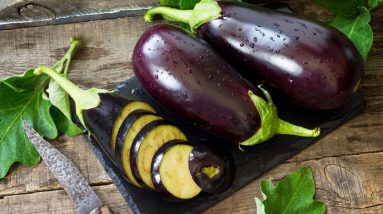
Unveiling the Incredible Health Benefits of Eggplant: The Purple Superfood
Eggplants, also known as aubergine, brinjals, or baingan, are glossy purple fruits that are often prepared and treated like vegetables. They are spongy. It is a common ingredient in many cuisines, primarily Mediterranean ones.
Historians claim that eggplants have been around since 50 BCE. In the past, it mainly served as an ornamental item rather than a food item. Travellers brought the plant’s seeds to America, where a British gardener planted them. The plant produced tiny, white, oval-shaped fruits that resembled chicken eggs, thus the name.
Eggplants come in an assortment of colours and shapes and provide numerous health benefits. This article discusses everything there is to know about eggplants.
Nutritional Profile of Eggplant
With a high water content, eggplant is low in calories and fat. It contains some fibre, protein, and carbohydrates as well. Compared to the white and green types, the purple varieties generally show a higher protein content. Significant concentrations of vital amino acids, including leucine, valine, lysine, and isoleucine, are also present in purple eggplant.
A 100-gram serving of raw eggplant contains the following nutrients.
- Calories: 25 kcal
- Water: 92.3 g
- Protein: 0.98 g
- Fibre: 3 g
- Fat: 0.18 g
- Carbohydrate: 5.88 g
- Calcium: 9 mg
- Iron: 0.23
- Magnesium: 14 mg
- Phosphorus: 24 mg
- Potassium: 229 mg
- Vitamin C: 2.2 mg
- Vitamin K: 3.5 µg
- Sodium: 2 mg
- Folate: 22 µg
Potential Health Benefits of Eggplants Helps in Weight Loss
Since eggplant is low in calories and high in fibre content, it is an excellent addition to a weight-loss-friendly diet. Fibre significantly aids weight loss. Fibre promotes fullness and satiety by moving through the digestive tract slowly. It reduces calorie intake and helps to maintain a calorie deficit for weight loss. Therefore, eggplant can be a healthy alternative to higher-calorie ingredients.
Helps Treat Anaemia
WHO estimated that 1.92 billion people globally suffer from anaemia. Patients who have anaemia suffer from headaches, fatigue, depression, migraines, weakness, and cognitive malfunction. Eggplants contain a fair amount of copper and iron. Copper with iron assists in increasing the count of red blood cells. Eating foods that have iron will help in managing anaemia.
Helps Fight Cancer
Eggplant is rich in antioxidants. Investigations show bioactive components in eggplants help prevent cancer. Chlorogenic acid is an antioxidant found in eggplants that is antiviral and antibacterial and helps fight against cancer. Moreover, solasodine rhamnosyl glycosides (SRGs) are a unique plant compound found in eggplants that have anti-cancer properties.
Supports Bone Health
Eggplants are rich in calcium and magnesium, both necessary for strong bones. Moreover, it is rich in vitamin K and copper, which prevents osteoporosis and strengthens bones. The collagen present in this vegetable also assists in the connective tissues and bone formation.
Supports Heart Health
Eggplants may help lower the risk of heart disease because of their antioxidant content. By lowering triglyceride and LDL cholesterol levels, eggplants enhance heart health. Nevertheless, the majority of research now only involves tests on animals. More research is necessary to determine how eggplants could improve human heart health.
Summary
Based on their antioxidant content, eggplants may help lower heart disease. Furthermore, eggplants are a high-fibre, low-calorie substitute for higher-calorie ingredients in recipes. This fibre in eggplant can help reduce calorie intake by promoting satiety and fullness. In addition, eggplants are rich in antioxidants. It has chlorogenic acid, solasodine rhamnosyl glycosides (SRGs), etc., that prevent and fight against cancer cells. It also supports bone health and manages anaemia.
Healthy Eggplant Recipes
It is easy to include eggplant in the diet or meal plans because of its incredible versatility. It tastes best when baked, roasted, grilled, or sautéed and is topped with a bit of olive oil and seasoning. Here are a few simple recipes to try:
Roasted Eggplant
Servings: 4
Preparation time: 5 minutes
Cooking time: 20 minutes
Ingredients
- Eggplant: 1 whole (cut into ¾-inch cubes)
- Olive oil: 2 tbsp
- Salt: to taste
- Black pepper: ½ tsp
Method of Preparation
- Preheat the oven to 425°
- Take a large bowl and toss cubed eggplant with oil, salt and pepper.
- Place cubed eggplants in a baking paper and bake for 20-25 minutes. Remember to flip the eggplants after 15 minutes.
- Serve immediately.
Air-fryer Eggplant Fries
Servings: 6
Preparation time: 15 minutes
Cooking time: 10 minutes
Ingredients
- Eggs: 2 large
- Eggplant: 1 medium
- Chilli flakes: to taste
- Cheese: 2 tbsp
- Black pepper: to taste
- Garlic salt: to taste
Method of Preparation
- Preheat the air fryer to 375°
- Whisk egg, mix cheese, and seasoning and keep it aside.
- Cut eggplants into thick slices and dip in egg cheese mixture.
- In the greased tray, place the thickly sliced eggplants and cook for 5-7 minutes or until golden brown.
Risks of Overconsumption
The recommended amount of eggplants per day is less than 100 grams daily. One can get almost 7% to 10% of the daily fibre needs from one cup of eggplant. Overconsuming eggplants may have a few adverse effects. Such as:
Kidney Stones
Due to its high oxalate content, eggplant should be consumed in moderation by those who suffer from kidney stones. The crystal formations of calcium oxalates are extremely painful and inflammatory.
Allergic Reactions
Allergic reactions are one of the most frequent adverse effects of eggplant. Although it is uncommon, eating eggplant may induce anaphylaxis in certain people. Additional potential allergic reactions to eggplant include rashes or skin irritation, gastrointestinal pains, asthma, or trouble breathing.
Solanine Poisoning
Eggplants naturally contain a poison called solanine. Vomiting, nausea, and sleepiness are all signs of solanine toxicity that can result from overconsumption. However, to reach potentially dangerous solanine levels, one would need to consume more than twelve whole eggplants (at least!) in a single sitting.
Iron Deficiency
Iron is bound to nasunin, a kind of anthocyanin found in eggplant peels, which extracts iron from the cells. It may impair the body’s absorption of iron and result in a deficiency.
Summary
Overeating eggplants might result in solanine toxicity and allergies. The compound found in eggplant peels called nasunin, a kind of anthocyanin, binds to iron and extracts it from the cells. It can lower iron absorption and result in an iron shortage in the body. Eggplants naturally contain a poison called solanine. Vomiting, nausea, and sleepiness are all signs of solanine toxicity that can result from overeating. In addition, because of the oxalates they contain, kidney stones can also develop. Though uncommon, another potential eggplant side effect is an allergic reaction. It might trigger hives, rashes, skin irritation, anaphylaxis, swelling, and abdominal cramps.
HealthifyMe Suggestion
If you aren’t a fan of eggplants, instead of cooking them separately, you can combine eggplants with other foods to improve their palatability. For example, a non-vegetarian could add cubes of eggplant along with root veggies while cooking a chicken stew or add eggplants with mince in a tomato base as seen in a Shepherd’s Pie. A vegetarian could make a brinjal spiced mash (bharta) and pair it with pooris or stuffed parathas rather than plain rotis or rice.
The Final Word
It’s no secret that eggplants are an excellent addition to almost any meal, and there are many different varieties to pick from. Eggplant’s high fibre content is an ideal way to support gastrointestinal health because fibre is essential to a balanced diet. There are other possible health advantages as well. But it’s also necessary to incorporate a range of veggies in your diet to ensure you are getting a variety of nutrients.
Disclaimer: The purpose of this article is just to disperse knowledge and raise awareness. It does not intend to replace medical advice from professionals. For further information, please contact our certified nutritionists Here.
Frequently Asked Questions
A. Eggplant is a rich source of antioxidants. Rich in calcium, iron, potassium, phosphorus, magnesium, folate, and vitamin C. It provides several types of amino acids, such as leucine, isoleucine, valine, tryptophan, arginine, histidine, lysine, etc.
A. Absolutely, eggplants can be a great addition to your weight loss diet plan if consumed in moderation. It is high in fibre and phenolic compounds like antioxidants. In various studies, fibre and antioxidants show significant results in fat reduction.
A. Various studies have demonstrated eggplant has cardioprotective properties. It reduces the risk of stroke, heart attack, CAD, etc. Moreover, eggplants assist in increasing the red blood cells that deliver oxygenated blood throughout the body.
A. Eggplants are rich in anthocyanins and phenolic compounds. The peel of eggplant is a rich source of antioxidants, including nasunin, lutein, and zeaxanthin. Moreover, it offers vitamins A and C. These have tremendous health benefits, such as fighting free radicals, supporting eye health, reducing inflammation, mental health improvements, etc.
A. Eggplants are rich in fibre. Fibre assists in lowering blood sugar levels by slowing the rate of digestion and absorption of glucose in the body. In addition, the glycemic index of eggplant is just 15 (below 55 is low GI). Therefore, eggplants are a fantastic option for patients with diabetes.
A. Certainly, since eggplants are rich in fibre, they benefit digestion and bowel regularity and improve gut health. However, if you have a weak digestive system, it is recommended to avoid eggplant, as it may cause gas or bloating issues.
A. In Ayurveda, eggplant root has been used to treat diabetes and asthma since ancient times. Eggplant is a rich source of potassium and fibre that helps to treat several diseases.
A. Healthy enzymes included in eggplants stimulate hair follicles, resulting in the formation of healthy hair. Additionally, high in water content, aubergine aids in restoring and softening those dry hairs. To keep your hair’s natural shine and gloss, wash it with eggplant juice.
A. On a vegan diet, eggplant is a delightful dish to eat. It can even taste similar to meat, depending on how it is prepared and seasoned. Some of the most delicious ways to consume eggplant are tofu with roasted eggplant, vegan eggplant meatballs, etc.
A. Some of the best ways to consume eggplant to maximise its health benefits include grilling, roasting, steaming, and braising. It is best to avoid deep frying.
A. Although eggplants are good for health, it has a few potential side effects. Having too much eggplant may cause allergies, solanine poisoning, etc. Eggplants contain oxalates, which may lead to kidney stone formation.
A. Eggplants contain anthocyanins, antioxidants that reduce inflammation and pain. However, since every individual is different, for some, inflammation and pain might flare up, and for some, it might decrease.
A. Eggplant is a rich source of phytonutrients that improve overall brain health and is well-known to increase cognitive ability. These phytonutrients reduce free radicals that cause disease and protect the brain from getting affected.
A. Eggplants are added in various cuisines, baked, grilled and sauteed. Brining the eggplant (soaking in salted water) will also make the flesh super creamy. It also helps cut the bitterness.
Research Sources
Data by the US Department of Agriculture on eggplant
Cardioprotective properties of raw and cooked eggplant (Solanum melongena L)
Eggplant fruits protect against DNA damage and mutations.
Effects of Dietary Fibre and Its Components on Metabolic Health

Dr. Gabrielle Lyon Debunks Online Fitness Myths on The Mike O’Hearn Show
The internet is a wellspring of knowledge. The vast majority with access to it turn to Google and social media for answers to any questions they may have about anything. That is typically the case for those seeking health, fitness, and bodybuilding information as well. However, much of the information available online is rooted in personal opinion and lacks scientific evidence. This can pose a considerable risk, particularly for individuals with specific health conditions.
On the Oct. 27, 2023, episode of The Mike O’Hearn Show, the show’s namesake sat with Dr. Gabrielle Lyon, a functional medicine physician and author of “Forever Strong,” to bust myths surrounding fitness and training. Check it out the video below, courtesy of Generation Iron’s YouTube channel:
Dr. Lyon holds a fellowship in nutritional sciences and geriatrics. The social media boom started around the time she began her clinical practice. The misinformation in the fitness space took her aback. “It definitely wasn’t going to make anyone stronger, and it was a whole bunch of BS,” said Dr. Lyon. She began posting on social media to debunk the falsehoods and misconceptions within the health and fitness industry.
“We can change the trajectory of how we age,” said Dr. Lyon. The threat of misinformation about aging on social media is that it so easily spreads. Misinformation can be repeated so often that people believe it. There’s a prevalent fitness dogma that letting young children lift weights can stall their growth. Dr. Lyon clarified that there isn’t sufficient scientific support to back up that claim. Children can exercise as soon as they are curious about it. (1)
According to a Clinical Journal of Sport Medicine study, “training protocols with weights and resistance machines and with supervision…are relatively safe and do not negatively impact growth and maturation of pre- and early-pubertal youth.” (2)
View this post on InstagramA post shared by Dr. Gabrielle Lyon (@drgabriellelyon)
Dr. Lyon highlighted another common misconception about women lifting weights and how it can lead to a more masculine appearance. Masculinity is subjective, so how to measure it isn’t clear. Furthermore, most female gym goers don’t necessarily build the same amount of muscle tissue as their male counterparts due to variations in natural testosterone production. (3)
“Go into any gym, and it’s mostly the guys in the free weights area. Women are doing cardio because they have all these myths,” said Dr. Lyon. “These myths stem out of discomfort and not a real belief.”
Dr. Lyon opined that most women don’t actually believe they’ll get bulky lifting weights but rather want to avoid the time and effort strength training entails and use the fear of a more masculine appearance as an excuse to avoid lifting weights.
O’Hearn quipped that most male gym goers struggle to build muscle — a combination of sufficient intensity and frequency while following a diet that provides enough calories and protein are the common building blocks to add muscle tissue. In Laymen’s terms, it’s not easy to add muscle mass, so O’Hearn feels female gym goers shouldn’t worry about this made-up threat of looking masculine as a result of resistance training.
View this post on InstagramA post shared by Dr. Gabrielle Lyon (@drgabriellelyon)
Many female gym goers might perform various triceps exercises hoping to get rid of underarm fat, popularly known as “bat wings.” However, spot reduction through weight training is a myth. A Medicine & Science in Sports & Exercise study concluded that “Subcutaneous fat changes resulting from resistance training varied by gender…MRI found a generalized subcutaneous fat loss independent of gender, supporting the notion that spot reduction does not occur as a result of resistance training.” (4)
When scrolling through Instagram or reading about health and fitness online without peer-reviewed research supporting the claims made, or believing fitness influencers at their word, take everything with a grain of salt.
References
- National Institute on Aging. (2022, June 30). How can strength training build healthier bodies as we age? [Press release]. National Institutes of Health. https://www.nia.nih.gov/news/how-can-strength-training-build-healthier-bodies-we-age
- Malina RM. Weight training in youth-growth, maturation, and safety: an evidence-based review. Clin J Sport Med. 2006 Nov;16(6):478-87. doi: 10.1097/01.jsm.0000248843.31874.be. PMID: 17119361.
- Weiss LW, Cureton KJ, Thompson FN. Comparison of serum testosterone and androstenedione responses to weight lifting in men and women. Eur J Appl Physiol Occup Physiol. 1983;50(3):413-9. doi: 10.1007/BF00423247. PMID: 6683165.
- Kostek MA, Pescatello LS, Seip RL, Angelopoulos TJ, Clarkson PM, Gordon PM, Moyna NM, Visich PS, Zoeller RF, Thompson PD, Hoffman EP, Price TB. Subcutaneous fat alterations resulting from an upper-body resistance training program. Med Sci Sports Exerc. 2007 Jul;39(7):1177-85. doi: 10.1249/mss.0b0138058a5cb. PMID: 17596787.
Featured image: @drgabriellelyon on Instagram
The post The Mike O’Hearn Show — Dr. Gabrielle Lyon Explains Online Fitness Misinformation appeared first on BarBend.



